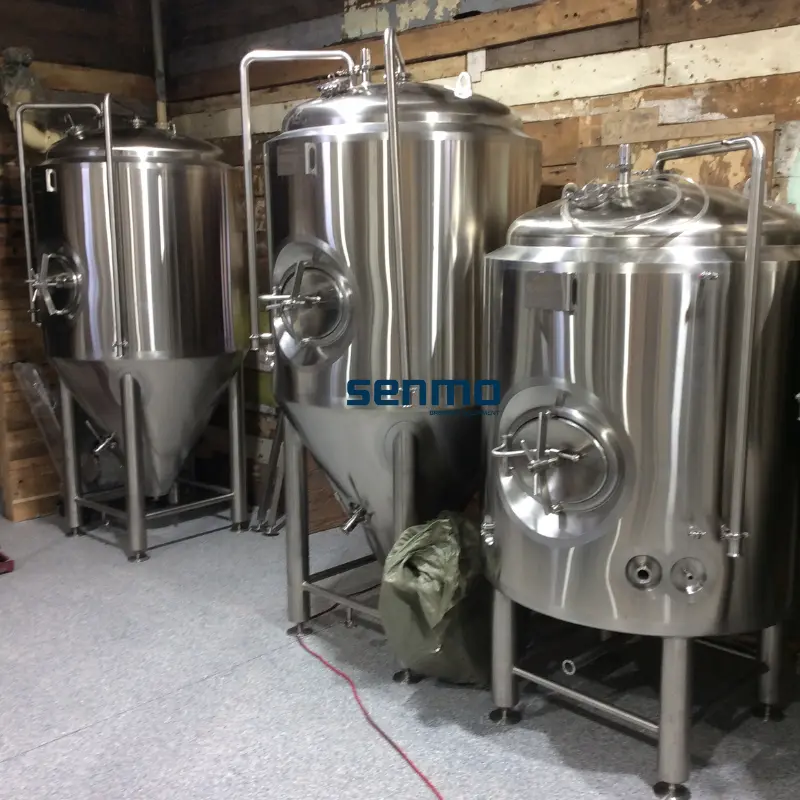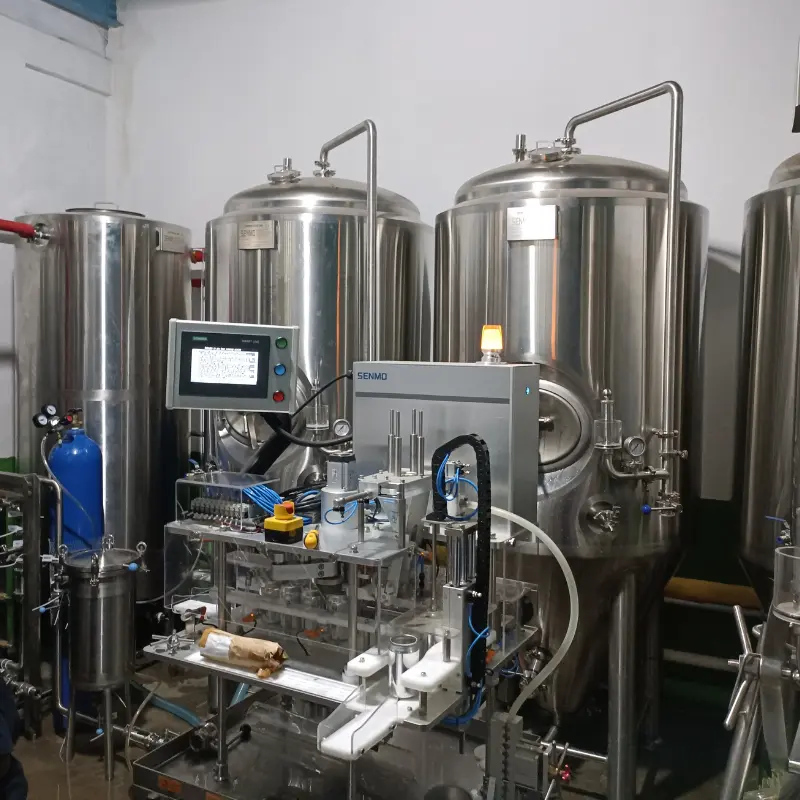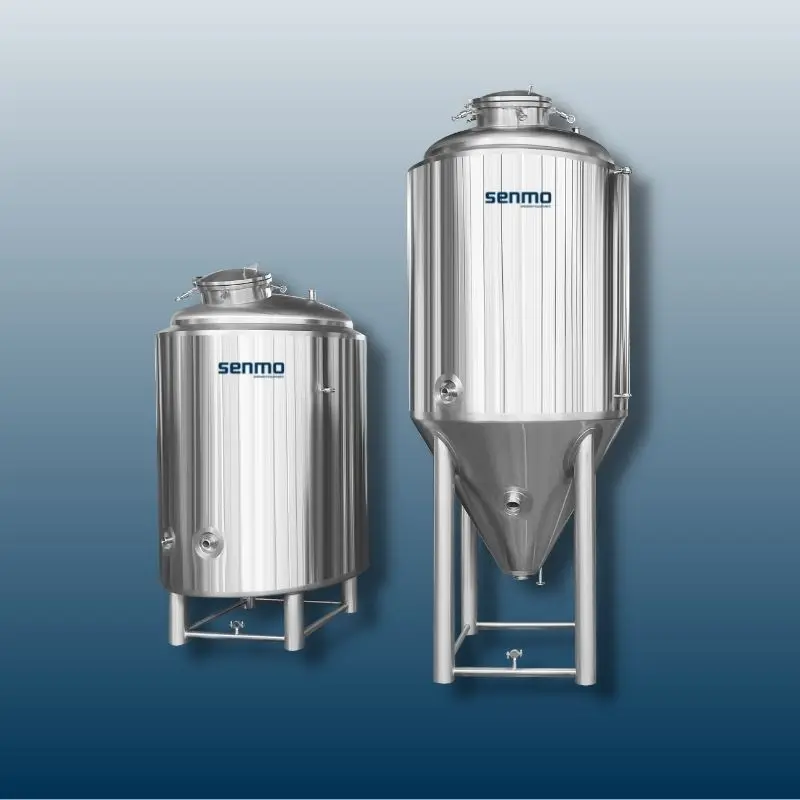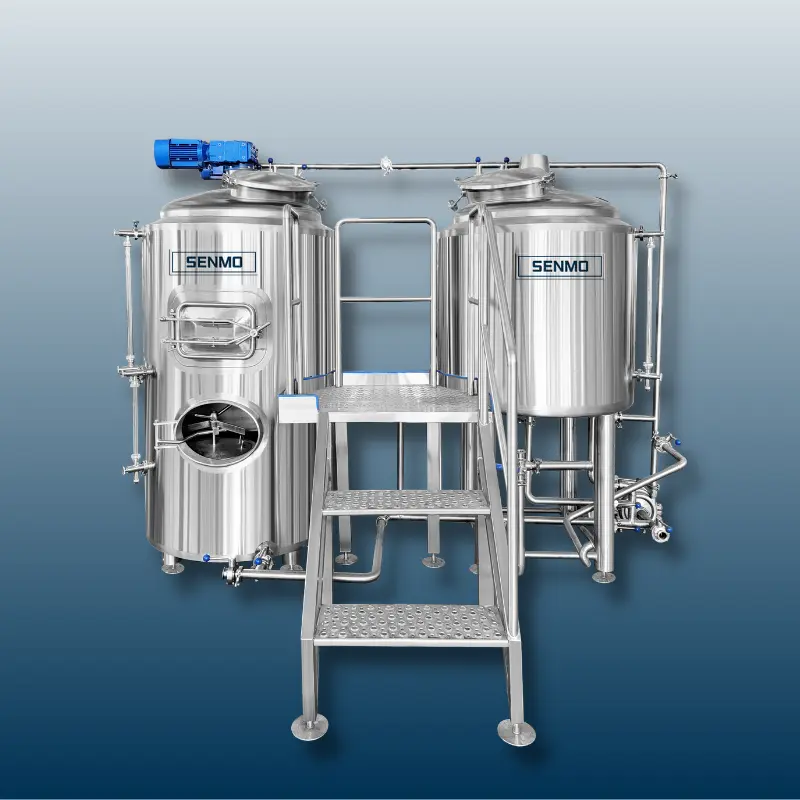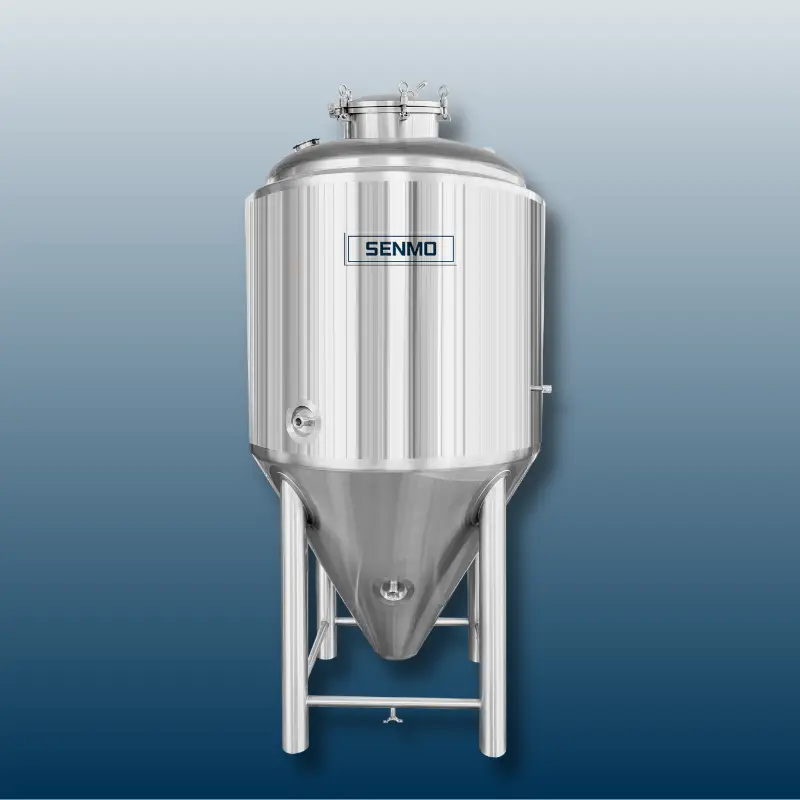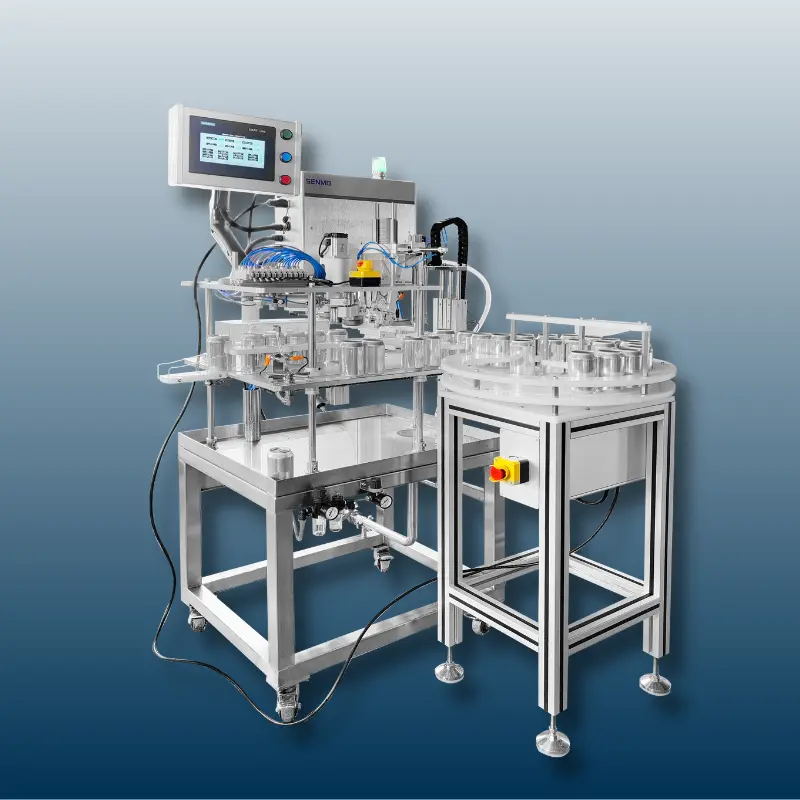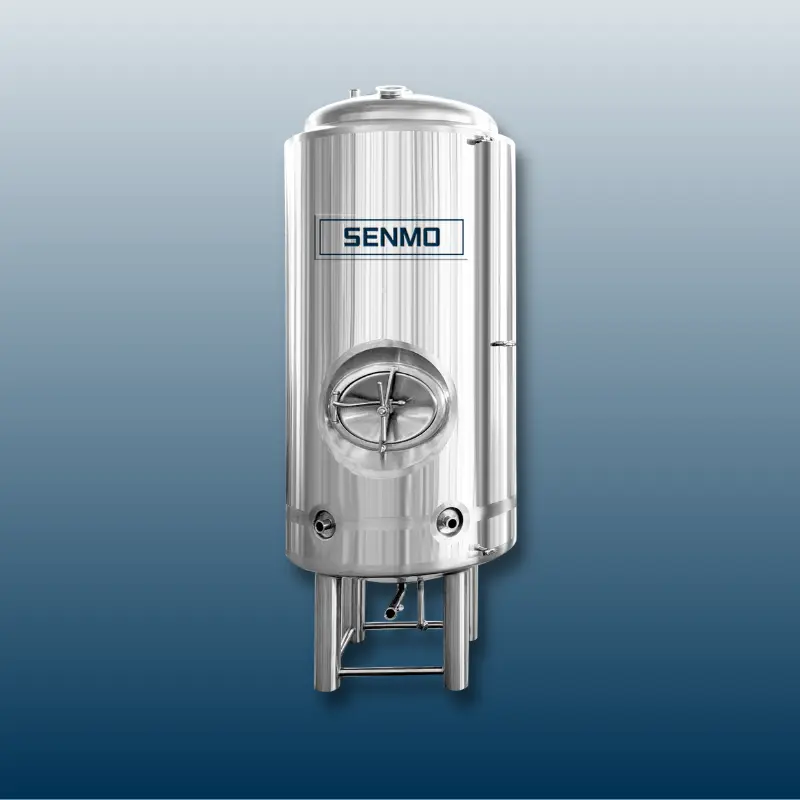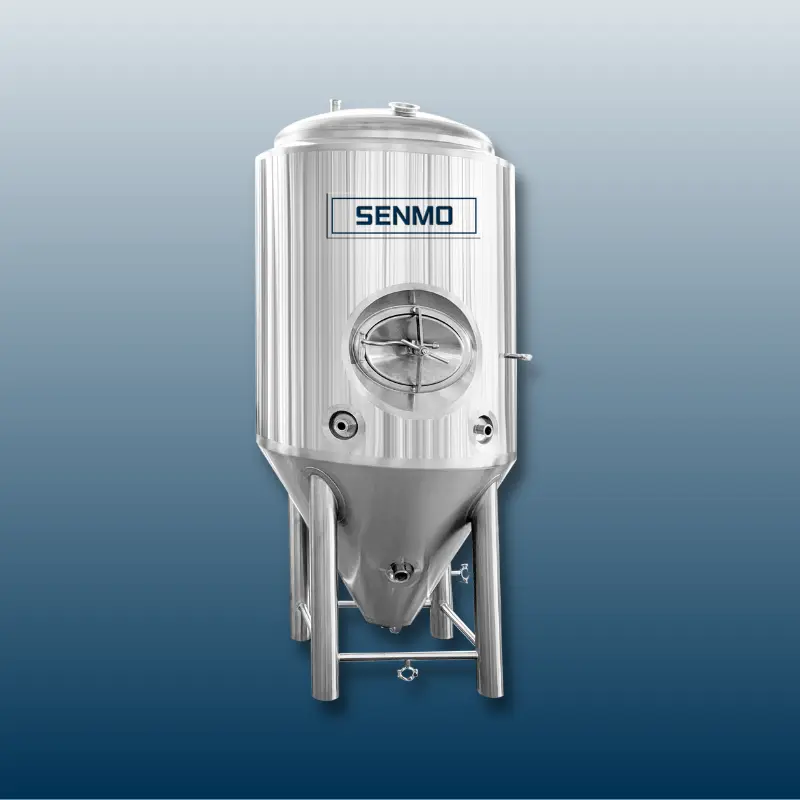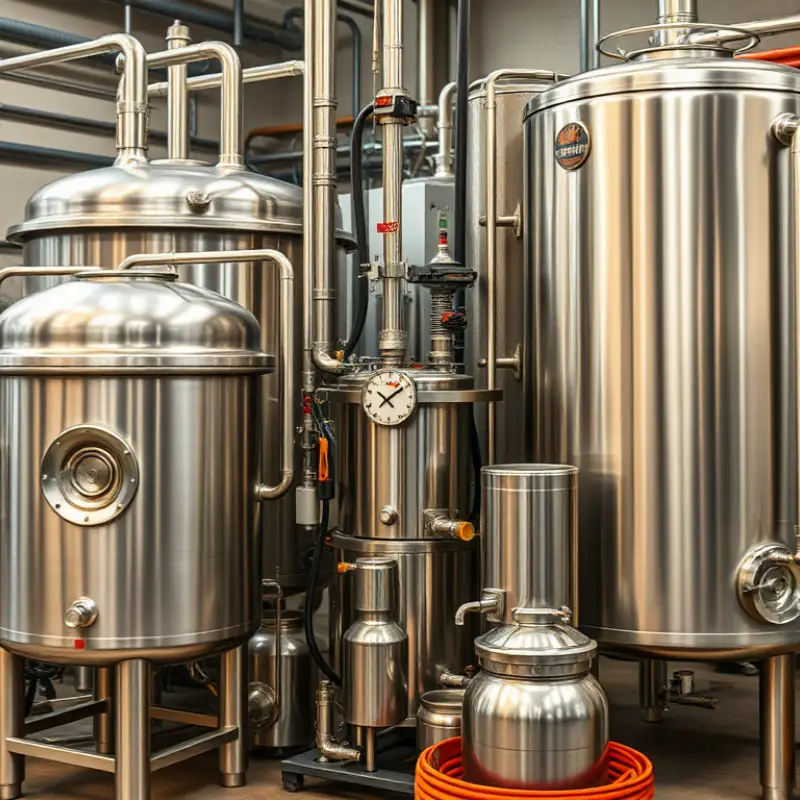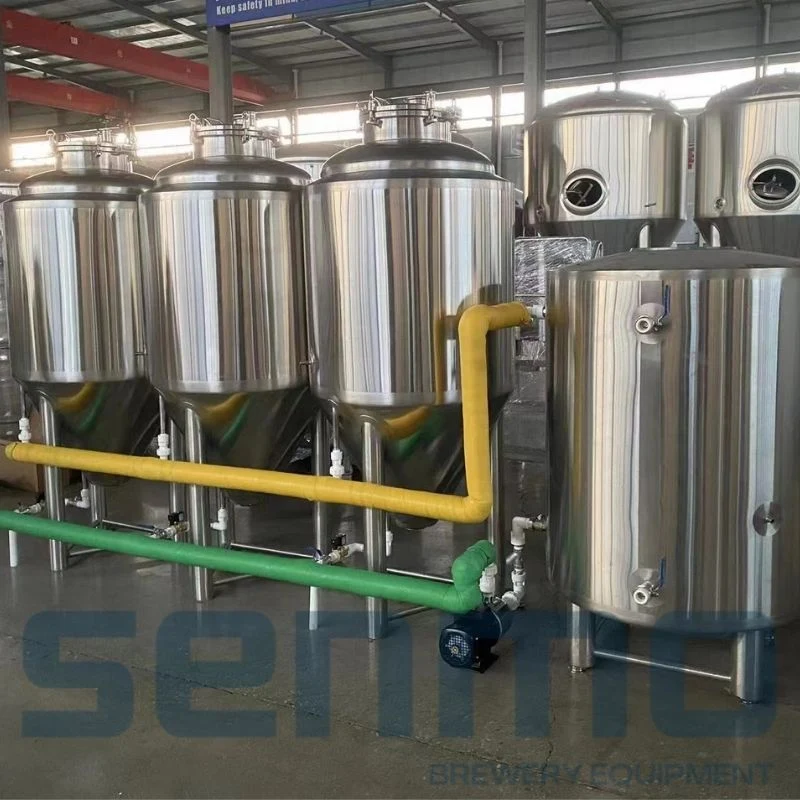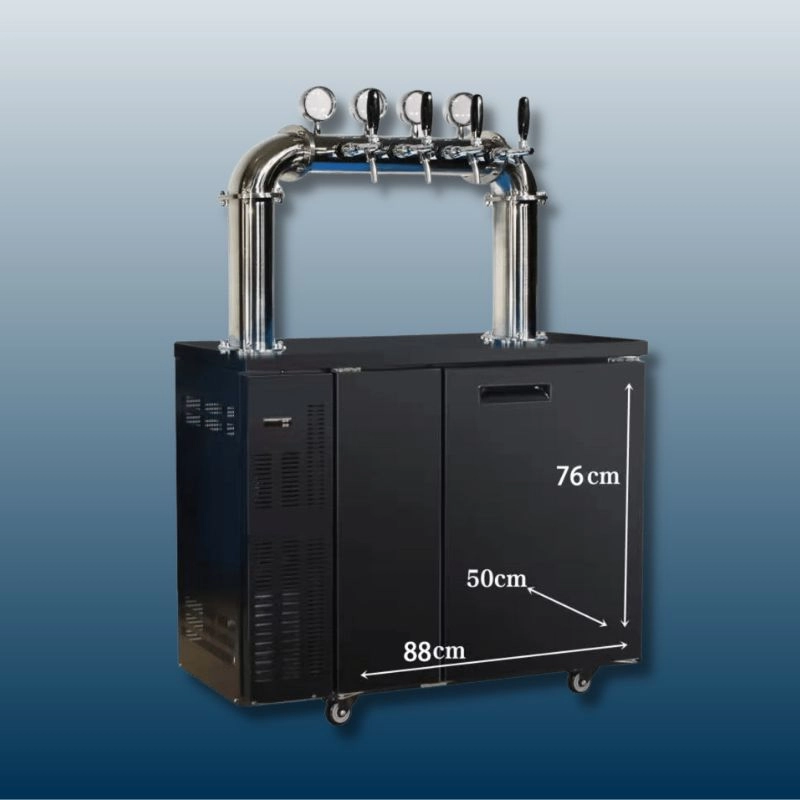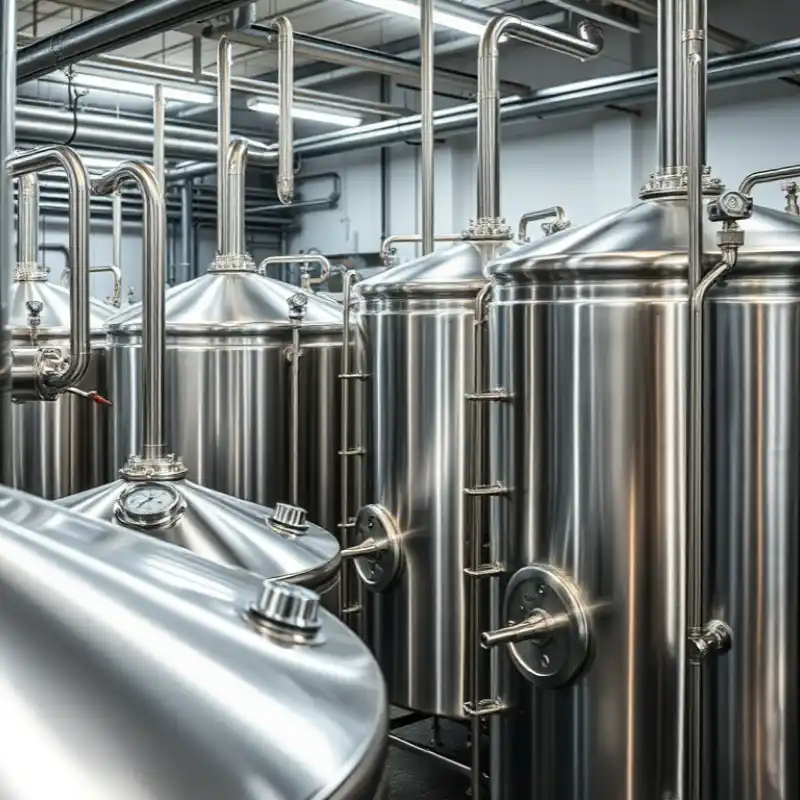Increased Production Capacity
A 15bbl brewhouse provides microbreweries with a significant increase in production capacity compared to smaller systems. The 15-barrel capacity allows for larger batch sizes, enabling breweries to produce more beer with each brew cycle. This capacity is ideal for microbreweries that are experiencing growth or aiming to meet the demands of a growing customer base.
A 15bbl brewhouse can produce approximately 1,860 gallons (7,023 liters) of beer per batch. For example, if a microbrewery operates five brew cycles per week, they can produce up to 9,300 gallons (35,115 liters) of beer in that time.
Versatility and Flexibility
The 15bbl brewhouse offers versatility and flexibility in brewing operations. It provides brewers with the freedom to experiment with different beer styles, flavors, and recipes, thanks to its larger size and capability to handle a wide range of ingredients. Microbreweries can easily accommodate seasonal offerings, limited releases, and special collaborations with other breweries, allowing them to cater to diverse consumer preferences.
With a 15bbl brewhouse, microbreweries can produce a wide range of beer styles and flavors. For instance, they can brew popular styles like IPAs, stouts, lagers, and seasonal brews such as pumpkin ales or fruit-infused beers.
Consistency and Quality Control
Maintaining consistency and ensuring quality control are crucial in the brewing process. The larger size of the 15bbl brewhouse allows for better temperature and pressure control, leading to improved consistency across batches. With precise temperature regulation and advanced monitoring systems, microbreweries can ensure the quality of their brews remains high, batch after batch.
Efficiency and Time Savings
Investing in a 15bbl brewhouse brings notable efficiency and time savings to the brewing process. The larger capacity means fewer brew cycles are needed to achieve desired production volumes. This not only reduces labor costs but also optimizes overall production time, allowing breweries to meet customer demands more efficiently. Additionally, the streamlined design and advanced automation features of modern 15bbl brewhouses further enhance operational efficiency.
Scalability and Growth Potential
For microbreweries with aspirations for expansion, a 15bbl brewhouse provides a solid foundation for future growth. Its larger capacity allows for increased production without the need for significant infrastructure changes. With the ability to meet higher demands, microbreweries can expand distribution, enter new markets, and establish themselves as key players in the craft beer industry.
For example, if a microbrewery initially operates at 50% capacity with a 15bbl brewhouse, they can later increase production to 30bbl or even 60bbl brewhouses as they grow.
Annual Production Estimate
With a 15bbl brewhouse operating at full capacity, a microbrewery can potentially produce around 45,120 barrels (5,615,200 gallons or 21,258,016 liters) of beer annually.
This estimate assumes the brewery operates at full capacity throughout the year.
Remember, these numbers and examples may vary based on specific brewing techniques, efficiency, and operational factors unique to each microbrewery. However, the 15bbl brewhouse provides a solid platform for growth and increased production capabilities, allowing microbreweries to meet the demands of their expanding customer base while maintaining quality and consistency.
How to install 15 bbl brewhouse for a microbrewery?
Installing a 15 barrel (bbl) winemaking facility is a relatively complex process that requires consideration of several factors. The following is a general installation guide, but please note that specific installation steps may vary depending on plant layout, equipment brand, and supplier requirements. Before installation, it is recommended to consult a professional brewing equipment supplier or consult an engineer to ensure that the installation is done according to the correct procedure.
Here are the general installation steps
Layout Planning. Assess plant space to ensure there is enough room to install 15 bbl brewing equipment. Make sure the installation complies with local building codes and safety requirements, taking into account the size of the unit, plumbing connections, power supply and ventilation requirements.
Determine the location of equipment. determine the installation location of brewing equipment, including hop tanks, mash tuns, lees tanks, fermentation tanks and storage tanks, etc. Make sure there is enough space between devices for operation and maintenance.
Installing infrastructure. Providing the necessary infrastructure for the installation of brewing equipment, including water, electricity and steam supply. Make sure these supplies meet the device manufacturer's requirements.
Install the piping system. Install the piping system according to the layout of the equipment and the process flow. This includes water source piping, steam piping, yeast feed piping, cooling water piping, etc. Make sure that the piping system is hygienic and that proper connections and valves are used.
Installation of equipment. According to the installation instructions and drawings provided by the equipment manufacturer, install various equipment, including hop tanks, mash tuns, fermentation tanks, storage tanks and supporting piping systems. Ensure that equipment connections are tight, valves are operating properly, and perform necessary leak checks.
Connect the control system. Connect the brewing equipment with the control system, including temperature control, pressure control, liquid level control and automatic control system, etc. Ensure that the control system can accurately monitor and operate the brewing process.
Test: Before the official production, test and debug the equipment. Check that all plumbing connections are tight, valves are operating properly, and that brewing equipment is functioning properly.
How many square meters of workshop area do you need?
Installing a 15 barrel (bbl) micro brewing facility requires consideration of a certain plant floor space to accommodate the facility itself as well as associated operating space and facilities. While specific square footage requirements may vary by device brand and layout, the following is a general guideline:
Brewing equipment area.
Enough room for 15 bbl brewing equipment. This includes areas for hop tanks, mash tuns, fermenters, storage tanks and other equipment. In general, these devices require a relatively large space for operation, maintenance and cleaning. Approximately 30 to 40 square meters will be required, but specific needs may vary.Piping and access areas.
The space required to install the piping system is also taken into consideration. This includes cooling water piping, steam piping, yeast feed piping, etc. In addition, in order to facilitate maintenance and repair, it is necessary to reserve a channel space. These areas need to be about 10 to 15 square meters in size.
Storage area
Leave a certain space for the storage and maturation of finished beer. This may include storage tanks, wine barrels or other containers. Depending on demand, an area of approximately 10 to 20 square meters is required.
Office area
A portion of the area is set aside for office space for the management and operation of the microbrewery. This includes desks, file storage areas, and more. An area of about 5 to 10 square meters is required.
In addition, a reasonable layout among devices needs to be considered to ensure the convenience of operation and the smoothness of the workflow. Please note that the above square footages are for reference only, specific square footage requirements may vary depending on equipment layout, plant conditions and operational needs. Before installation, it is recommended to consult a professional brewing equipment supplier or consult an engineer to ensure a suitable plant area to meet the installation and operation needs of the equipment.
Conclusion
The 15bbl brewhouse offers microbreweries a perfect balance between production capacity, flexibility, quality control, efficiency, and scalability. It empowers brewers to unlock their brewing potential, experiment with new flavors, and cater to the ever-evolving preferences of craft beer enthusiasts. With a 15bbl brewhouse at their disposal, microbreweries can confidently embark on their journey to craft exceptional brews, build a loyal customer base, and make their mark in the vibrant world of craft beer.
FAQ
Q1: What is a 15-barrel brewhouse?
A1: A 15-barrel brewhouse is a brewing system designed to produce batches of beer with a total volume of 15 barrels, where one barrel equals approximately 31 gallons or 117 liters.
Q2: Is a 15-barrel brewhouse suitable for a microbrewery?
A2: Yes, a 15-barrel brewhouse is a popular choice for many microbreweries. It offers a balanced production capacity, allowing microbreweries to produce a substantial amount of beer while maintaining a craft-focused approach.
Q3: How much beer can a 15-barrel brewhouse produce per batch?
A3: A 15-barrel brewhouse can produce around 465 gallons or 1,760 liters of beer per batch. The exact amount may vary depending on factors like recipe, brewing efficiency, and equipment design.
Q4: What equipment does a 15-barrel brewhouse consist of?
A4: A typical 15-barrel brewhouse includes components such as a mash tun, lauter tun, kettle, whirlpool, hot liquor tank, and various pumps, valves, and controls for managing the brewing process.
Q5: How long does a brewing cycle take on a 15-barrel brewhouse?
A5: The brewing cycle time varies depending on the recipe and process, but it typically ranges from 6 to 10 hours, including mashing, boiling, and cooling.
Q6: Can a 15-barrel brewhouse handle different beer styles?
A6: Yes, a 15-barrel brewhouse is versatile and can accommodate a wide range of beer styles. Brewers can adjust the recipe, ingredients, and brewing parameters to produce various types of beers.
Q7: What type of facility space is required for a 15-barrel brewhouse?
A7: The space required depends on the specific layout and equipment arrangement, but a 15-barrel brewhouse typically requires a moderately sized area that includes brewing vessels, fermentation tanks, and other necessary equipment.
Q8: How many fermentation tanks are needed for a 15-barrel brewhouse?
A8: The number of fermentation tanks needed depends on factors like production goals, beer styles, and turnaround time. A general guideline is to have multiple fermentation tanks to allow for continuous brewing and fermentation cycles.
Q9: Can a 15-barrel brewhouse be expanded in the future?
A9: Yes, many 15-barrel brewhouses are designed to be expandable. Breweries can add additional fermentation tanks, conditioning tanks, or even upgrade to a larger brewhouse as their production demands grow.
Q10: What are the advantages of using a 15-barrel brewhouse for a microbrewery?
A10: Some advantages include a balanced production scale suitable for microbreweries, the ability to produce a variety of beer styles, and a manageable workload for a smaller brewing team.
Q11: Is staff training provided when purchasing a 15-barrel brewhouse?
A11: Many equipment manufacturers offer training as part of the purchase package. Training typically covers equipment operation, maintenance, safety protocols, and brewing techniques.
Q12: What considerations should be made when integrating a 15-barrel brewhouse into a microbrewery setup?
A12: Considerations include space planning, utility requirements (water, electricity, steam), ventilation, drainage, regulatory compliance, and future growth plans.
Q13: How does a 15-barrel brewhouse impact the brewery's production capacity and distribution?
A13: A 15-barrel brewhouse can help a microbrewery scale its production to meet local demand. It can also facilitate limited distribution to nearby markets and taprooms.
Q14: What maintenance and cleaning routines are needed for a 15-barrel brewhouse?
A14: Regular maintenance and cleaning are essential to ensure consistent beer quality and equipment longevity. We provide guidelines for maintenance schedules and procedures.
Q15: How does the cost of a 15-barrel brewhouse compare to other brewing equipment sizes?
A15: The cost of a 15-barrel brewhouse falls between smaller pilot systems and larger production systems. It offers a cost-effective balance between production capacity and initial investment.

